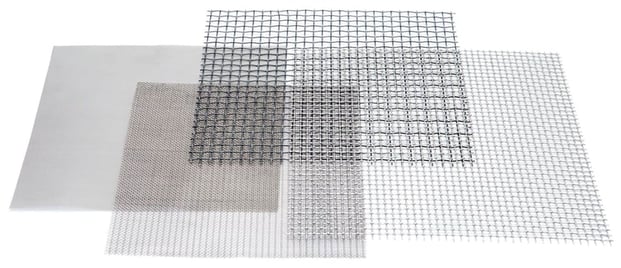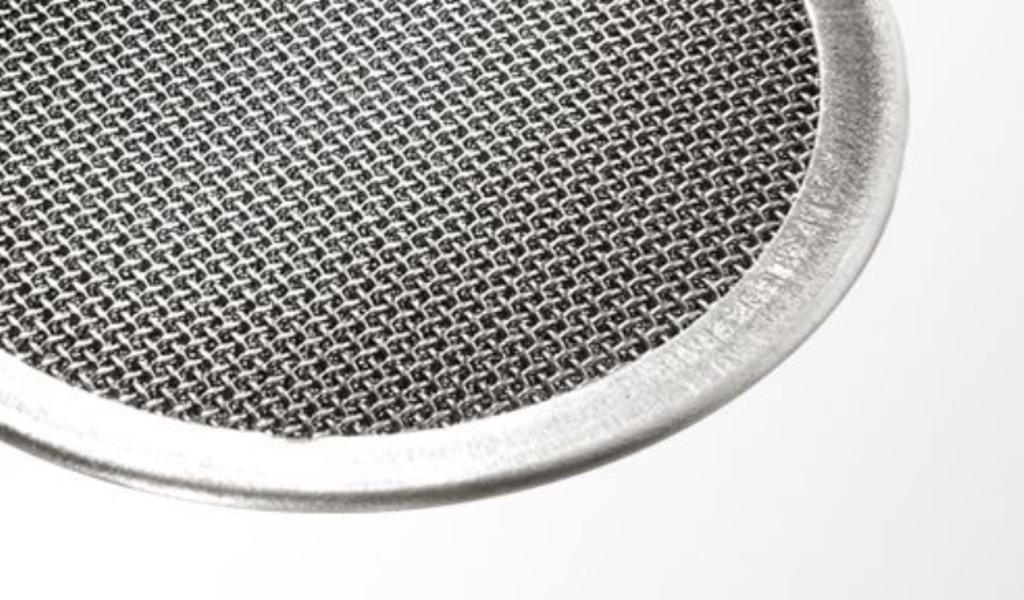The Importance of Installing Woven Wire Mesh Properly
Woven wire mesh offers a level of customization, unlike any other filtration/screening material, allowing it to accommodate a wide range of applications. That said, no matter how your process utilizes wove wire, the way in which it is installed makes all the difference.
By installing woven wire correctly, you are improving its longevity and performance, but ensuring it delivers optimal results safely. But if you are unaware of how your woven wire should be installed, the success of your operation can be put in jeopardy.
Knowing this, W.S. Tyler is here to leverage our 150 years of woven wire mesh experience to provide insight into the steps, tips, and best practices needed for you to achieve seamless woven wire installation.
With that, we wrote the following article to break down the ins and outs of installing woven wire mesh. You will learn:
- Why it's important to install your woven wire properly
- How to install your woven wire
- The common mistakes to avoid when installing woven wire
- How to handle your woven wire
The Importance of Knowing How To Install Woven Wire Mesh
It goes without saying that the performance of your woven wire mesh is heavily dictated by how well it's installed. When installed properly, woven wire has a better chance of delivering the intended result.

But more importantly, installing your woven wire correctly helps to reduce safety concerns, ensuring industry standards are met. This is ultimately reflected in lower operational costs as you will be spending less time and money addressing woven wire repairs/replacements.
Efficient Woven Wire Mesh Installation
Whether integrating woven wire screen packs into a high-volume plastic extrusion operation or a woven wire spark arrestor onto a chimney, you must first understand the needs of the application to ensure proper installation. You must hand-pick each parameter, such as alloy and mesh count, to ensure your mesh can accommodate the desired particle flow/screening, corrosion resistance, strength, etc.
As you prepare to install your woven wire, you should take the time to clean the mesh, removing any debris or obstructions that may have occurred during shipping, and making sure the mesh is thoroughly dry. At the same time, accurate measurements should be taken to ensure an exact fit.
If your woven wire must be cut or stamped, tooling should be selected in accordance with the properties of the mesh.
When handling the mesh, precautions such as wearing gloves, should be taken to avoid injury. Specifically looking at the edges of your mesh, which are known to be sharp, it is recommended to treat the edges.
This can be done by doing things like attaching smooth fittings or folding the edges over. To learn more about how to address the edges of your woven wire solution, read the following article:
Once the woven wire is placed in its appropriate housing and properly secured, it is critical that you examine the equipment, specifically looking for things like sagging in the mesh and broken wires. You should also monitor how the mesh performs initially, checking the desired functions are being delivered.
The only thing left to do is conduct a consistent maintenance routine, inspecting the condition of the mesh and cleaning it consistently.
What Are Common Mistakes Made When Installing Woven Wire Mesh?
There are several mistakes that you can make when installing woven wire mesh that can have a substantial impact on your operational success. First and foremost is failing to properly prepare for the installation.
Things like cleaning the mesh and properly measuring the mesh/mesh housing are often overlooked. This can lead to inconsistent mesh performance and difficulty fitting the mesh into your equipment.
It is also common to see the wrong tooling used for tasks like cutting and stamping the mesh. When the wrong tooling is used, the mesh can become damaged, which can lead to an unsecured installation.
As it is important to take safety precautions, again like wearing gloves, is to your well-being, it is often seen as an afterthought. As stated above, the edge of woven wire mesh can be sharp, so failing to take safety precautions increases the risk of injury.
With the edges of your mesh in mind, it is critical that you are not overworking the mesh when treating the edges. Doing so can compromise the integrity of the mesh, creating weak points or distorted pore openings.
But this doesn't mean to ignore treating the edges. Often overlooked, leaving the edges of your mesh untreated can, again, cause injury and even result in the wires falling out of place over time.
When actually installing woven wire, it is easy to overlook how well it is secured in your equipment. If your mesh isn't properly secured, you run the risk of inconsistent performance, sagging, or loss of rigidity.
Once installed and fully integrated, one of the biggest mistakes that are made is neglecting to follow a consistent maintenance routine. This, of course, can affect the longevity of your mesh, lead to undesirable performance, and even raise safety/regulatory concerns.
How To Handle Woven Wire Mesh
Despite being woven from durable alloys, typically 300 series stainless steel, woven wire mesh should be handled with care and mindful attention. It has been stated several times, but it is of the utmost importance that you wear the proper PPE.
If you are working with wire mesh rolls and fabricated components in-house, you must avoid overworking or placing heaving objects on your mesh. To that end, moving the mesh throughout your facility should done gently, being mindful not to drag or fold the mesh to avoid kinks or damage.
The way in which your woven wire is stored is just as important as how it is handled. It should stored in a designated area that is dry and relatively free of loose debris.
Keep Your Woven Wire Like-New With Proper Maintenance
The way in which you install your woven wire is just as important as how it is woven. Not only does it dictate how well it will perform, but how safe and compliant your operation is as well.
But once your mesh is fully integrated, it is important that you employ a consistent and reliable maintenance routine. Doing so will better your chances of achieving optimal results with an extended woven wire lifespan.
Having helped countless of industries integrate woven wire mesh for over 150 years, W.S. Tyler is dedicated to helping you get the most out of your mesh so you can spend more time focusing on other aspects of your operation.
Read the article below to learn everything you need to know about maintaining your woven wire mesh:
About Ronnie Brown
Ronnie is the Content Writer for W.S. Tyler and has four years of experience as a professional writer. He strives to expand his knowledge on all things particle analysis and woven wire mesh to leverage his exceptional writing and graphic design skills, creating a one-of-a-kind experience for customers.




